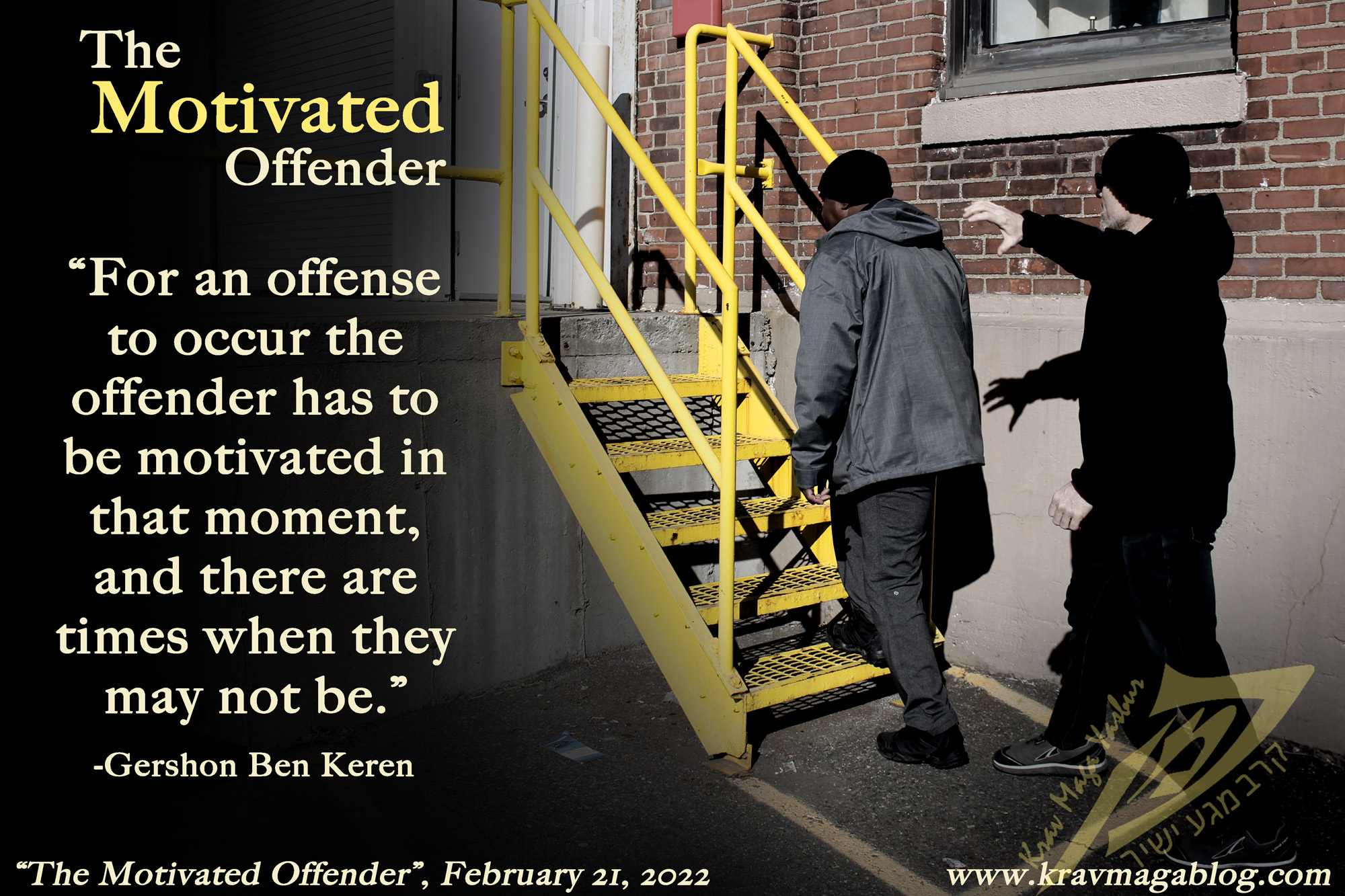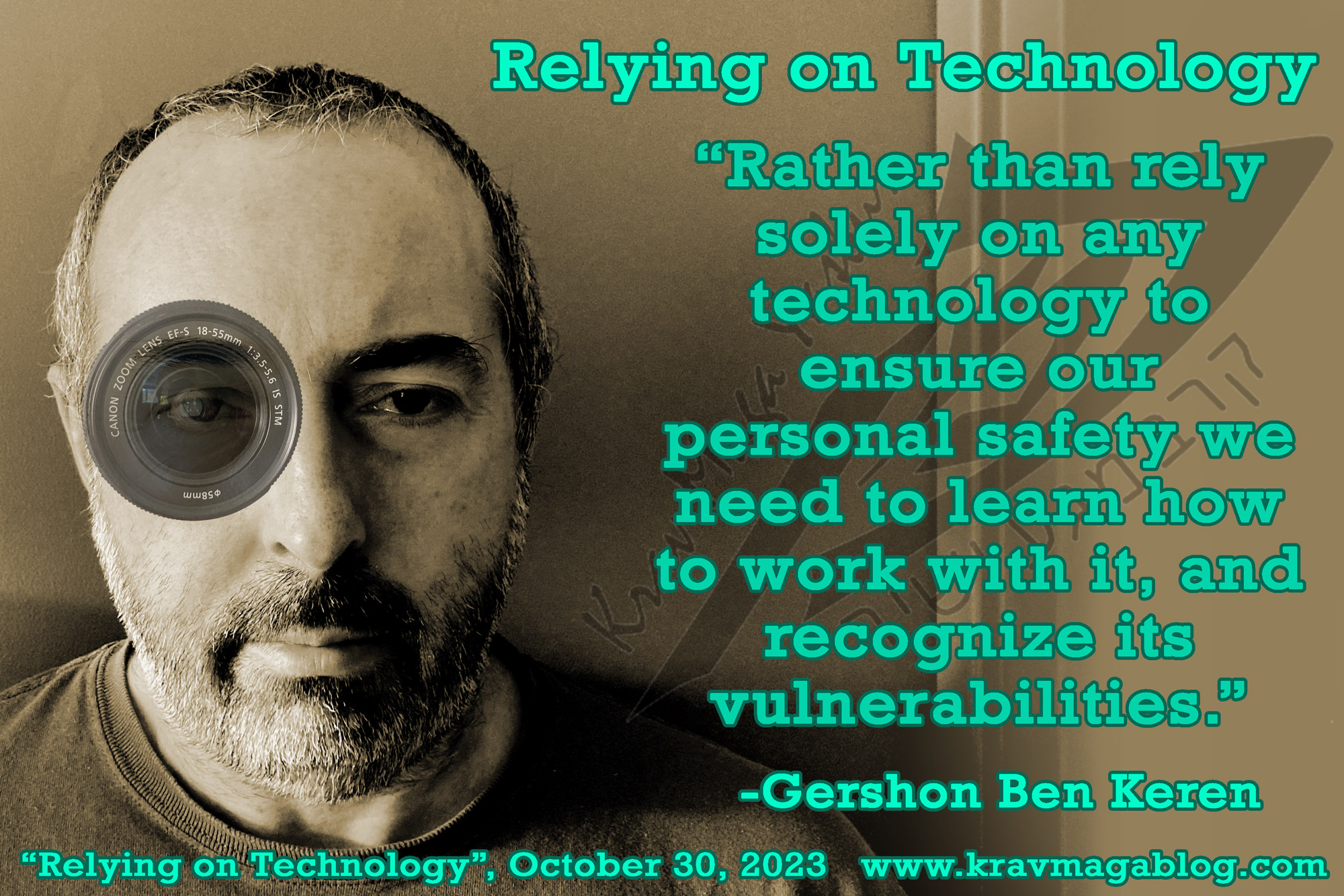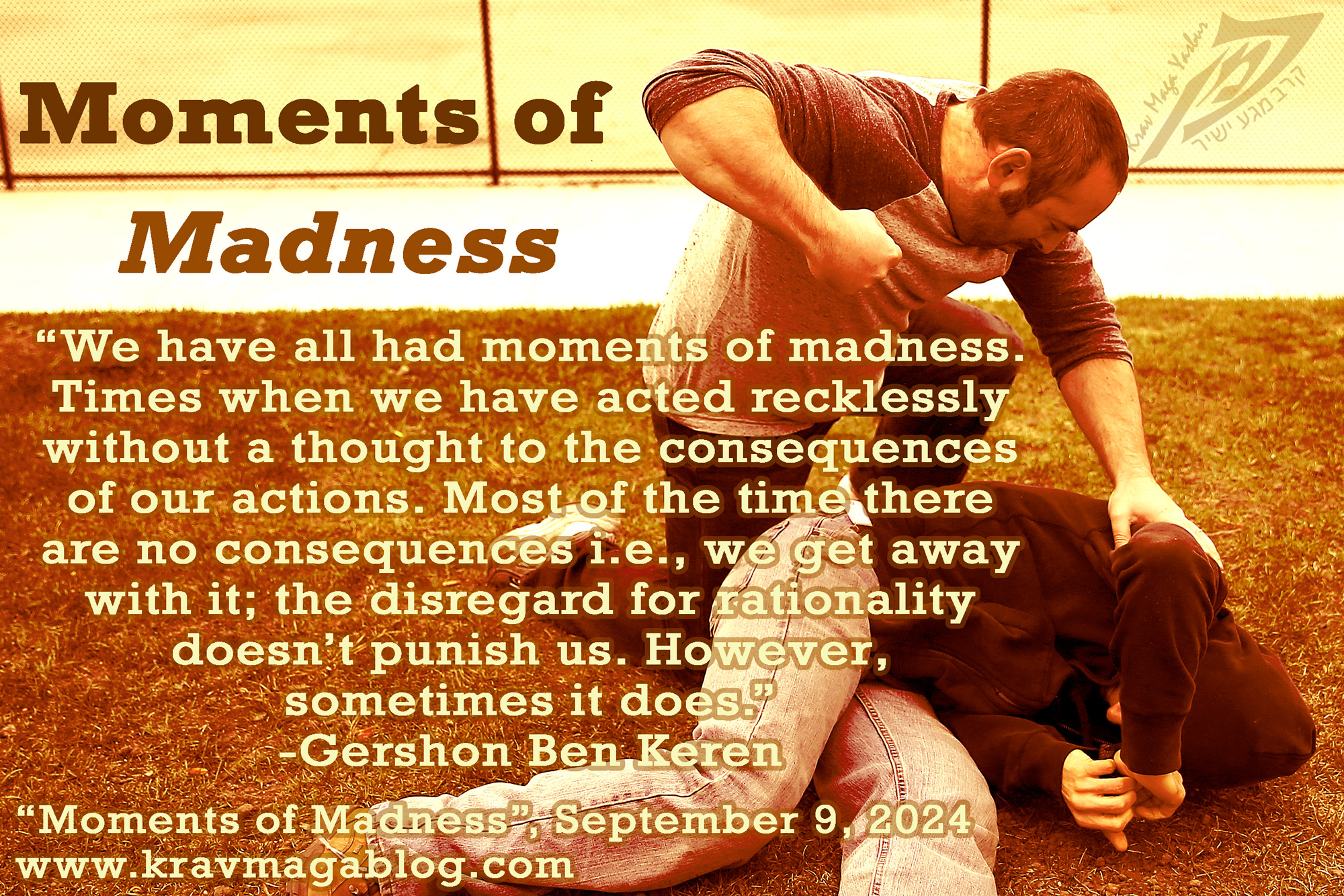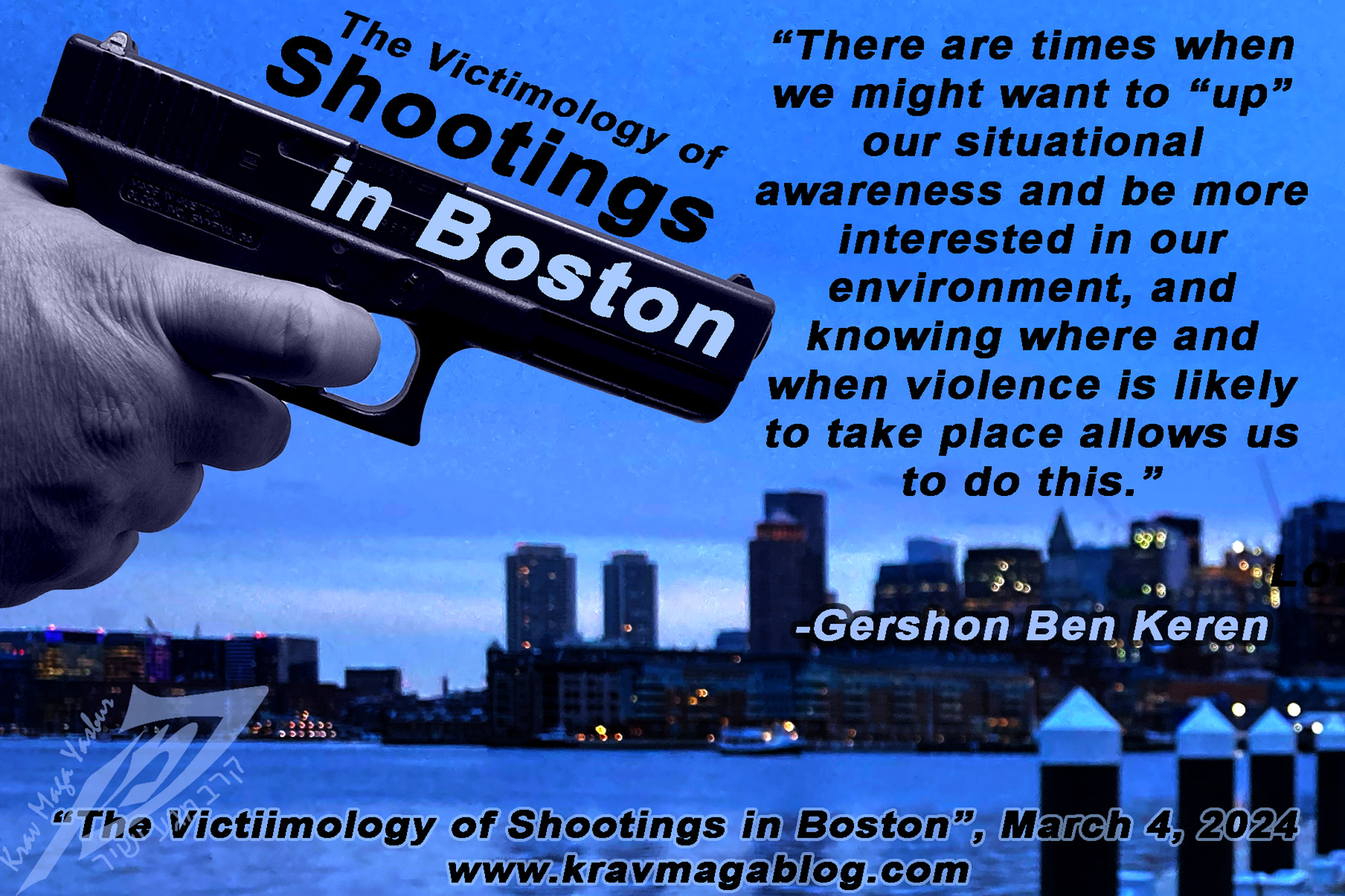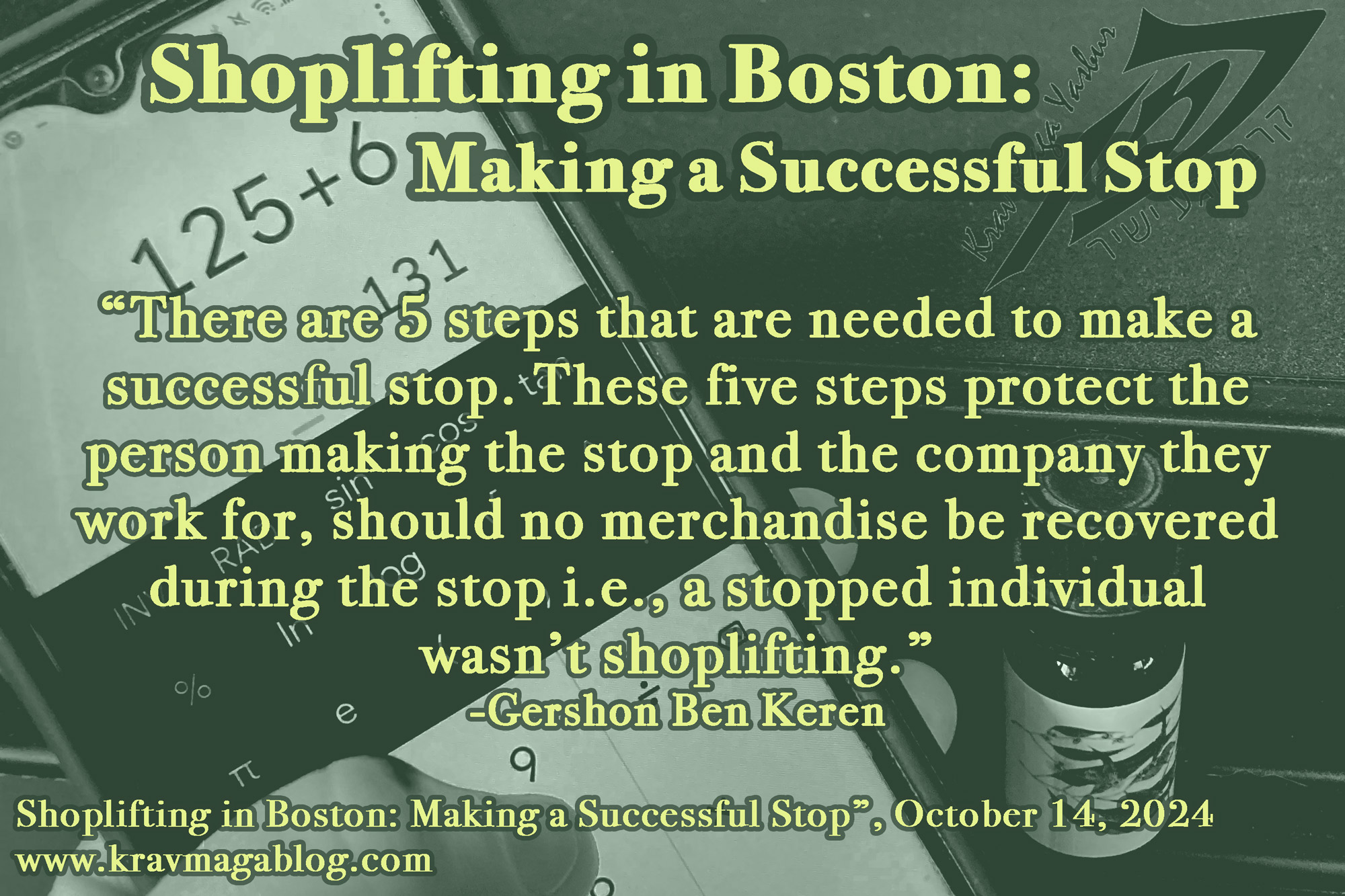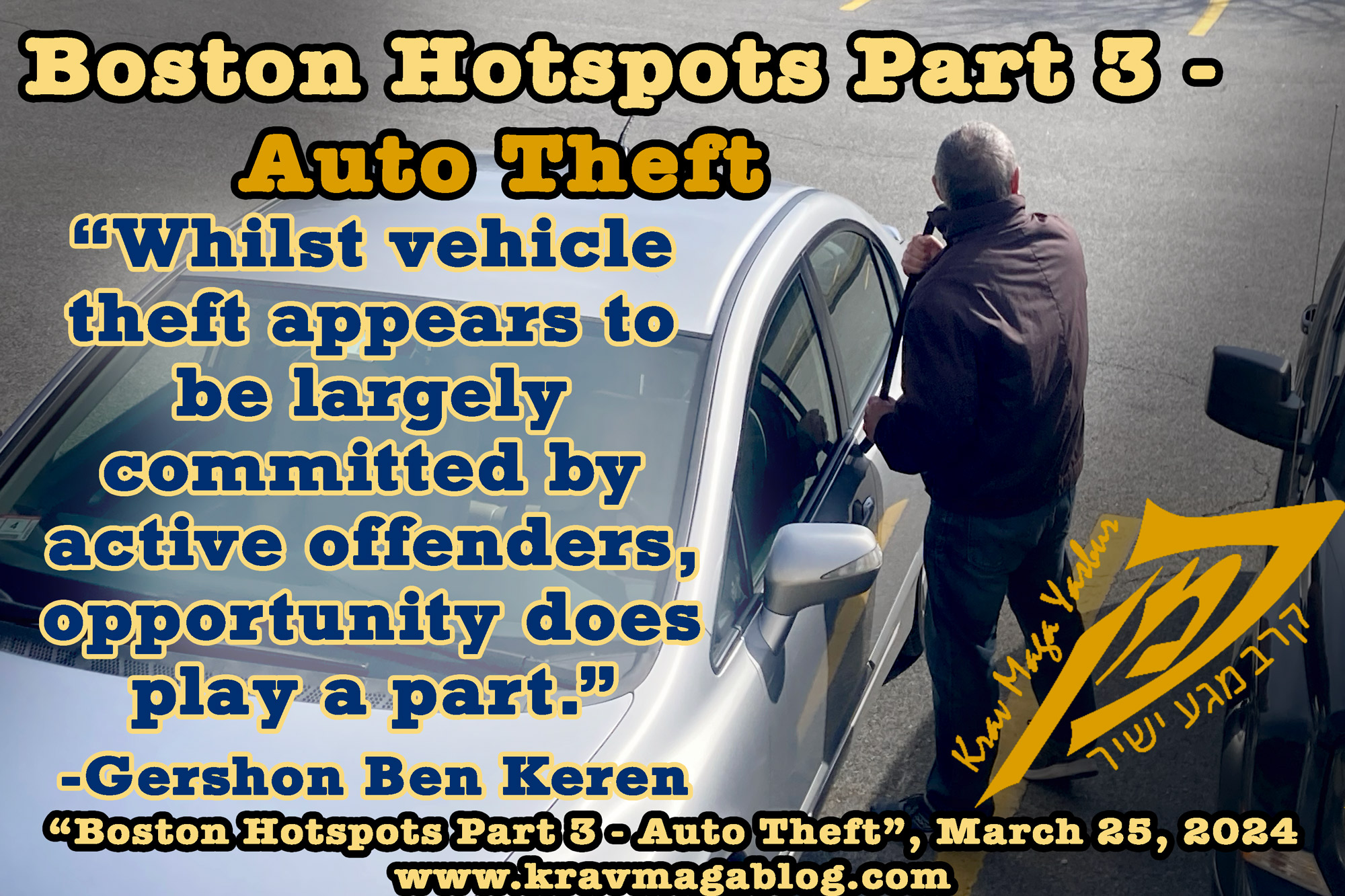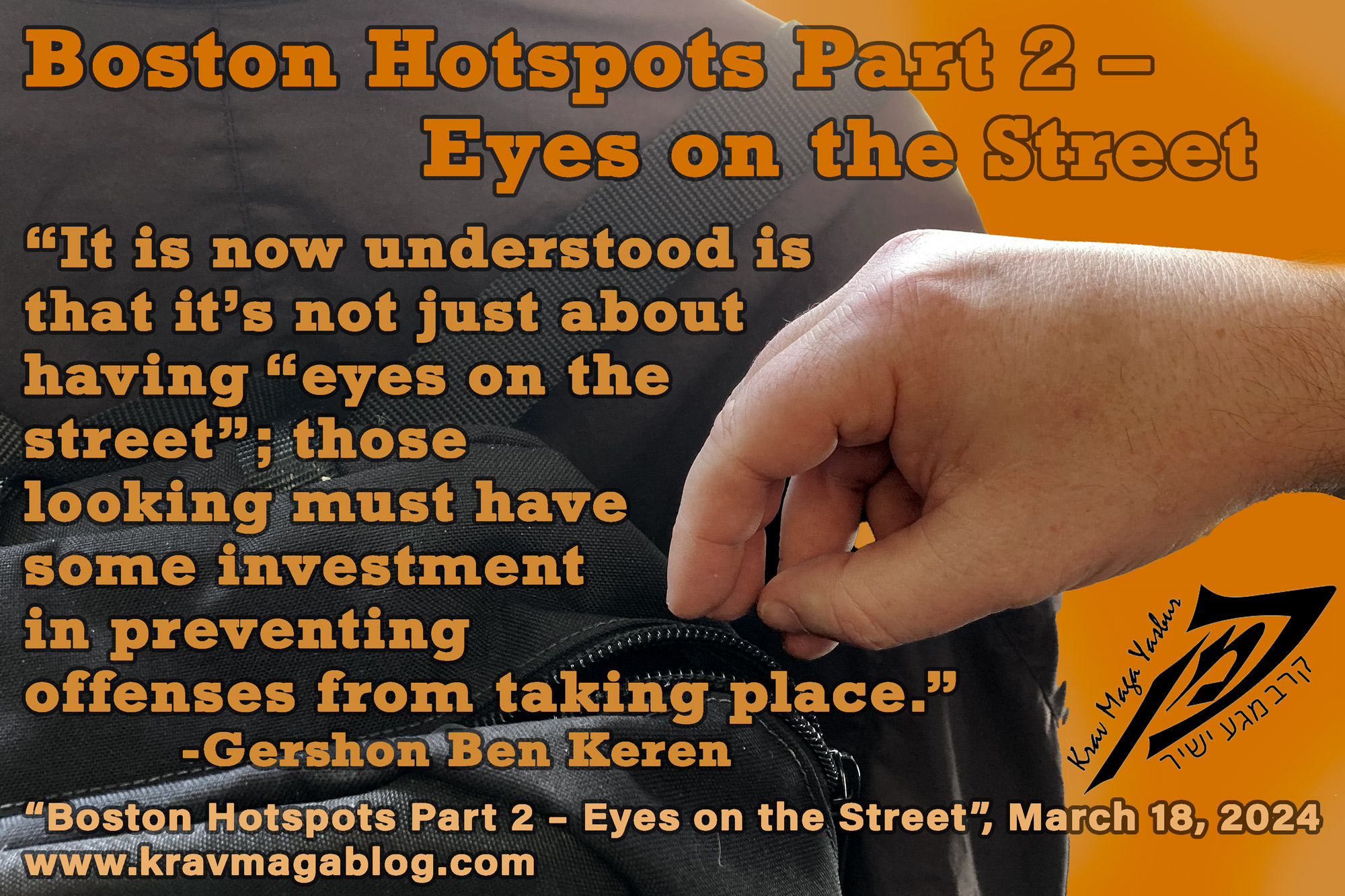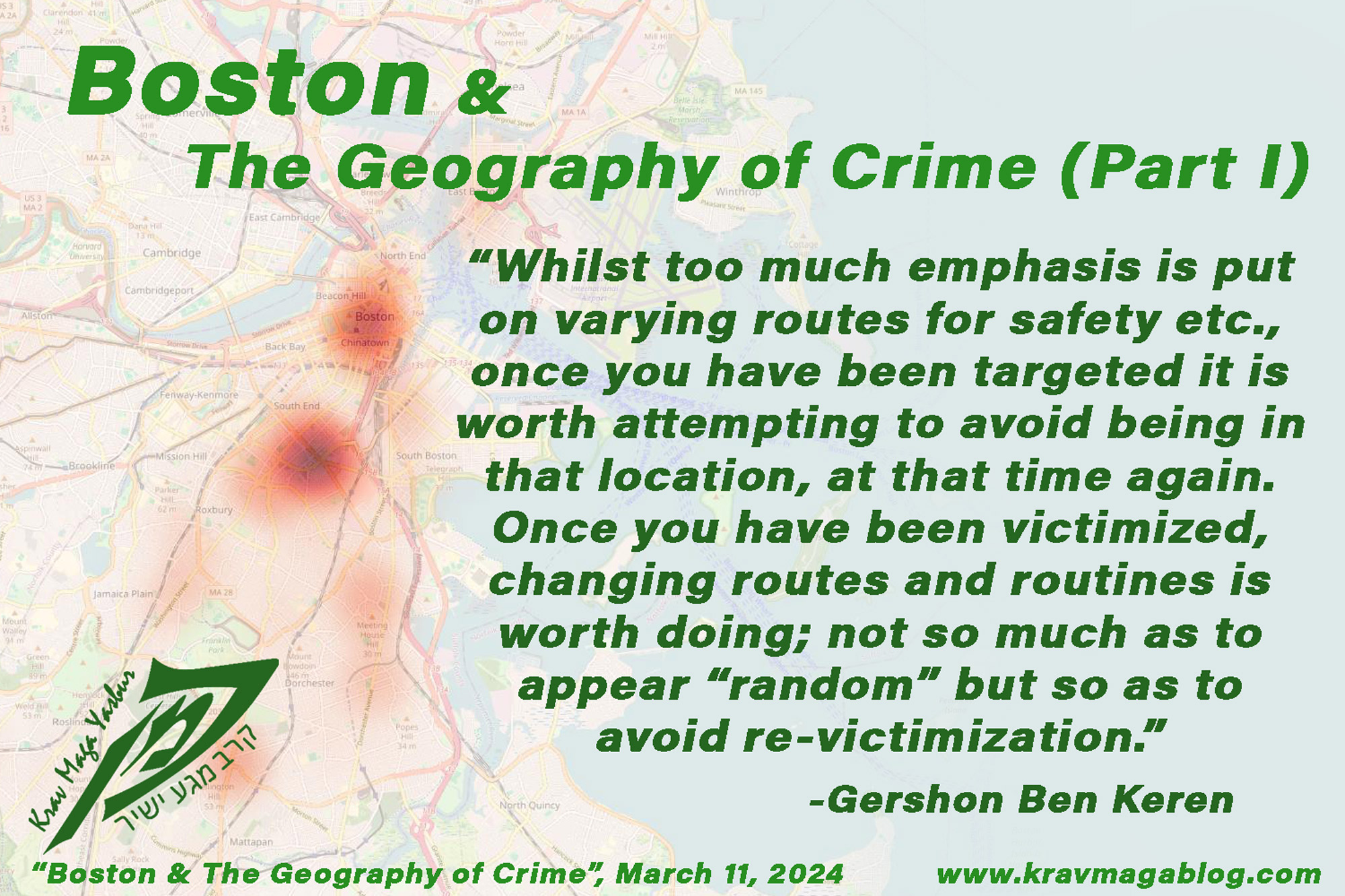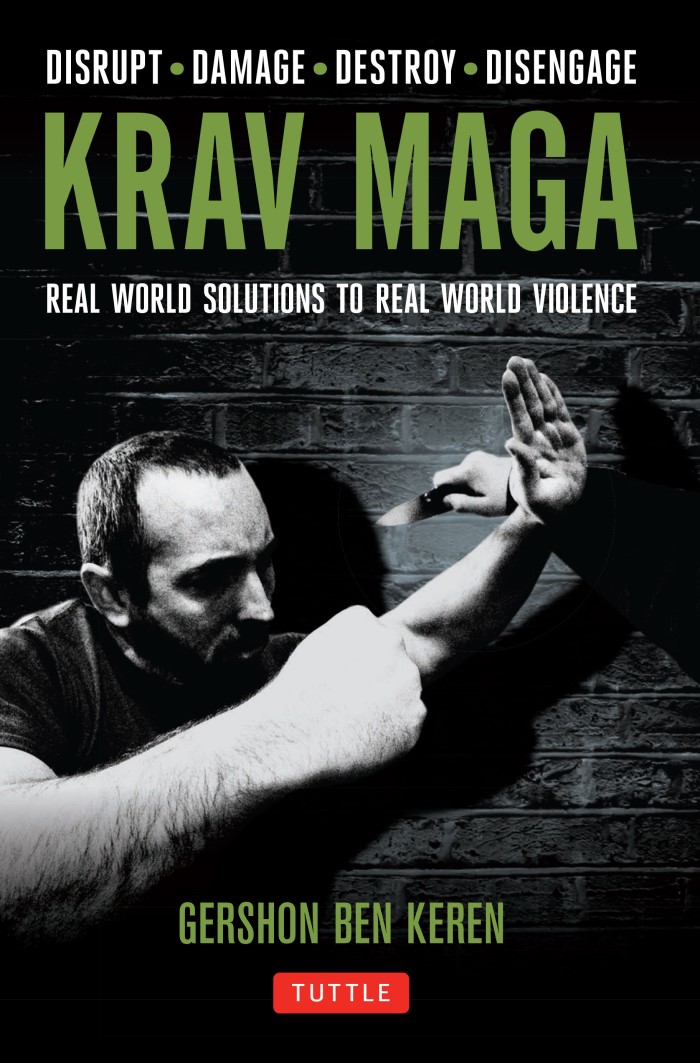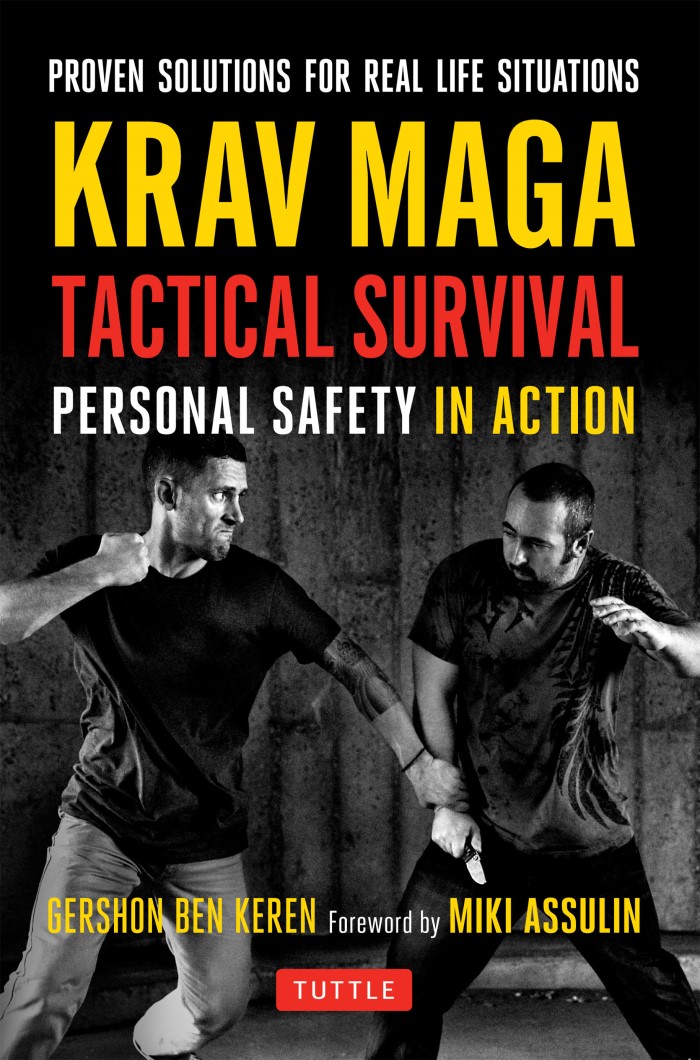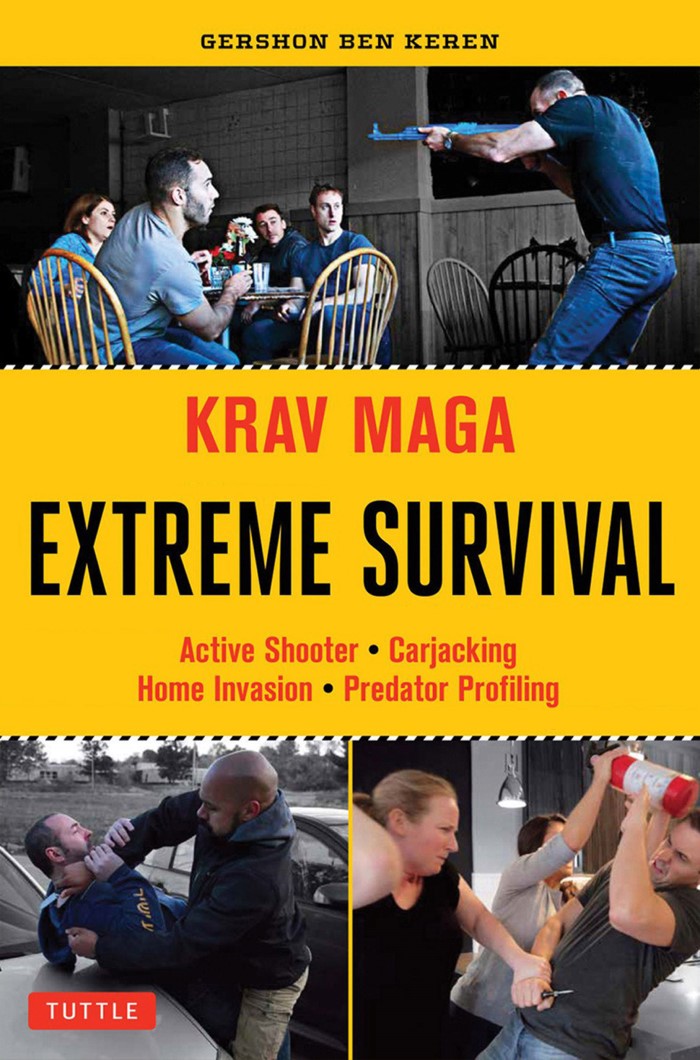Shoplifting in Boston: Making a Successful Stop, is an article written by Gershon Ben Keren, a 5th Degree Black Belt in Krav Maga, who teaches Krav Maga in Boston, MA. He has also authored three Amazon best-Selling Books on Krav Maga.
I have worked in retail loss prevention – preventing “shoplifting”, thefts by employees, and thefts throughout the supply chain such as at distribution centers - in a number of different capacities, and it is an area of crime-prevention that I have always been interested in. Especially when organized retail theft, has possible links to terrorism e.g., there is evidence that Al-Qaeda started to engage in organized, large-scale shop-lifting enterprises, to help fund their activities because they could no longer rely solely on Bin-Laden’s “legitimate” construction businesses for income when the economic downturn in 2008 hit construction especially hard. AQ, was not the first terrorist organization to involve themselves in retail crimes to fund their operations. The PIRA (Provisional Irish Republican Army) were well known for transporting cheaper/less taxed gasoline from the South of Ireland to the North and using sympathetic gas/petrol station owners and those they forced to sell their product, to fund their campaign. They also had a fairly complex cigarette/tobacco smuggling enterprise that they also used to derive revenue from i.e., whilst AQ may have gotten into large scale shoplifting ventures to help fund themselves they weren’t the first to explore how the retail industry could be used to generate revenue.
Data just released from the CCJ (Council on Criminal Justice) suggests that shoplifting has increased in Boston by 27% from the first part of 2023 to the same period in 2024. For the same period in 2019 it has risen by 55%. Whilst this rise may be down to better statistical reporting – which has certainly occurred – others have pointed to a change in the law (2018), that saw the threshold for larceny raised from $250 to $1200, which they believe has emboldened shoplifters i.e., it used to be that if you stole goods to a value below $250 it would be classed as a misdemeanor rather a felony larceny – a much more serious offense with greater consequences – which has now risen to goods worth $1200 (there have been cases of shoplifters being apprehended using a calculator or the calculator on their mobile phone to make sure that they stay below this limit). The purpose of this article is not to look so much as to why shoplifting has gone up in Boston but to inform store-holders/shop-owners who may not be able to afford a security guard how to make a successful “stop” of someone in a way that doesn’t mean that “innocent” people will be targeted, which may result in a business getting a bad name/reputation. This article doesn’t cover those who use a “grab and run” methods, or sweep/rake products off the shelves, as they are more obvious and overt but instead those who use more covert and surreptitious methods etc.
There are 5 steps that are needed to make a successful stop. These five steps protect the person making the stop and the company they work for, should no merchandise be recovered during the stop i.e., a stopped individual wasn’t shoplifting. These “five elements of proof” if followed completely mean that stopping someone believed to be shoplifting should never be unproductive. The five elements are:
- You must see the individual enter the store or department without the merchandise
- You must see the individual select the merchandise from the display
- You must see concealment of the merchandise selected. Seeing them carrying it out of the store is also sufficient for plain view cases.
- You must maintain constant, uninterrupted surveillance after concealment
- The individual must pass all registers and exit the store without making payment.
If all of these five elements are witnessed a person/employee has legally defensible grounds to make a stop. It is important to understand that these elements can’t be shared between people e.g., if one person believes that they saw the person select the merchandise, and at another time, someone else sees them conceal it etc., the chain of elements has effectively been broken. The importance of having all five elements in place is explained below.
Step One is important as it avoids stopping someone who entered into the store with items/goods they had purchased legitimately. It could be that a person on a shopping spree purchased something at the store earlier and is returning because they forgot to buy something, or wanted to compare prices at another store etc. They could also be coming in with a previously purchased item – at the same or another store - such as a top/blouse to try and match it with a skirt etc. Step Two reinforces this by ensuring that the merchandise is from this particular store and was not brought in from another. If you see someone simply holding an item, such as clothing, and then putting it in a bag, rather than seeing them select it, you don’t know if they brought it in to compare with some other piece of clothing etc. Step Three ensures that the individual is in possession of the unpaid merchandise. Many shoppers do not feel that merchandise needs to be returned to the same space if they change their mind about it, so it is quite common for shoppers to select an item, change their mind about purchasing it and wander to another part of the store and put it down. If a person/employee sees a customer who exits the store without the merchandise they selected (Step Two), it would be wrong to “assume” they concealed it. It is necessary to see them actively do this for the third element to be met. Step Four ensures that the person did not get rid of/dump the merchandise after they concealed it e.g. if a shoplifter thinks they have been spotted, they will often put the merchandise back in another part of the store. Step Five ensures that the individual had the intent to take the item without paying (something needed to prove theft). Without this step the shoplifter could argue that they intended to pay for the concealed merchandise, and the concealment location – such as inside their jacket - was in place of a shopping cart etc. Once they’ve passed the registers and exited the shop it is hard to make this argument. Regarding Step Five, extra care needs to be taken if products are displayed outside the store, such as on the sidewalk. Customers may genuinely/accidentally walk off with products still intending to pay for them etc.
If you are a small retail business that can’t afford trained security guards/loss-prevention officers, then it is down to yourself and/or your employees to make such stops. When doing so, safety should always be a priority e.g., you should not be chasing “runners” through parking lots, or trying to constrain physically resisting shoplifters etc. The primary goal in loss prevention is to get the goods back rather than seeing justice be enacted, however emotionally difficult this may be.
0 COMMENTS